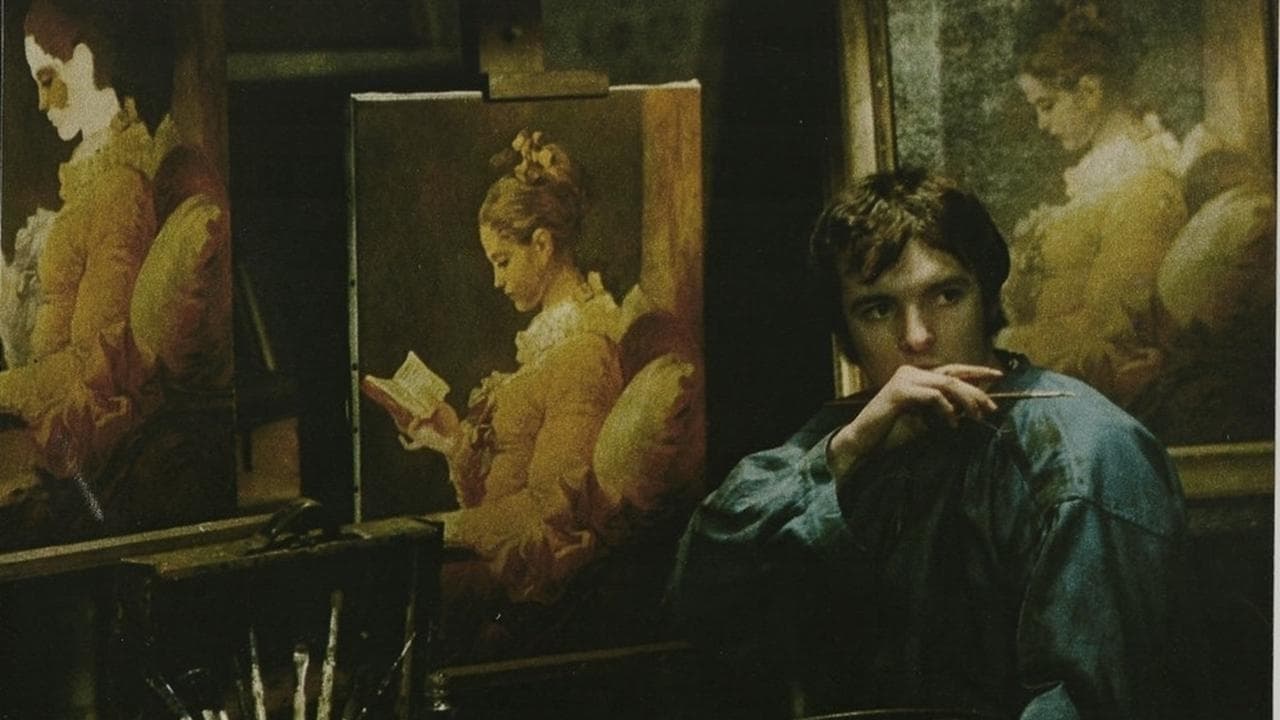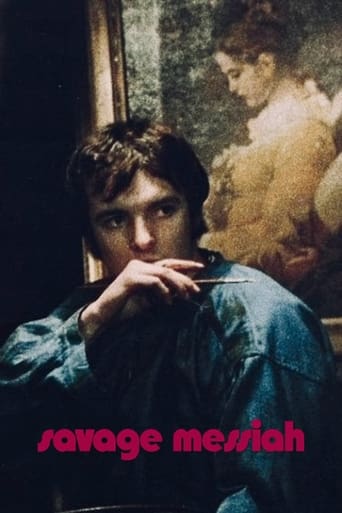

Wonderful Movie
... View MoreAn absolute waste of money
... View MoreExcellent characters with emotional depth. My wife, daughter and granddaughter all enjoyed it...and me, too! Very good movie! You won't be disappointed.
... View MoreIt's simply great fun, a winsome film and an occasionally over-the-top luxury fantasy that never flags.
... View MoreArt, expression, age, repression, sex, revolution and death... just some of the themes central to Ken Russell's typically exuberant biographical film, Savage Messiah (1972). At its most basic, the film looks at the troubled and often confusing relationship between French sculptor Henri Gaudier and struggling writer Sophie Brzeska. However, director Russell - ever the iconoclast - uses the film's internal subject matter as a platform to attack the idea of artistic criticism. With this in mind, the film goes beyond the more identifiable elements of biographical fiction to become something of a satire, as Russell eventually branches out and takes further swipes at film producers, financiers and the viewing public, who - in Russell's view - have destroyed the notion of 'art', both in its own right, and in the purely cinematic sense of personal expression.As the film unfolds it becomes clear that Russell is using Gaudier as something of an alter-ego; a stroke of characterisation that I'm sure is pure egocentric fabrication, as we see Gaudier become a laughing, wailing, scamp; obsessed with phallic symbolism and the female form and completely opposed to authority (sound familiar?). In Brzeska, his desire to find someone like-minded is fulfilled, whilst his appetite for lust and high-society remains just out of reach. The film is clever enough to subvert the usual love affair clichés, by depicting the couple's relationship through various alternative incarnations; mother and son, sister and brother, friend and foe, etc. As the film moves closer and closer to its final act, Russell offers us a touching and subtle depiction of loss, loyalty and friendship that ties all of these previous themes together exceedingly well.Here the usually bombastic director elicits a number of wonderful performances from his cast, allowing them to feel their way through the portrayal of these complex and not always likable characters, as opposed to simply acting it out. Amongst the stars, Scott Anthony impresses as the wildly enthusiastic genius Gaudier, whilst dance choreographer Lindsey Kemp plays the pitiful, snivelling promoter Angus Corky. However, it is Dorothy Tutin as the tortured Brzeska who really stands out; delivering a beautiful performance that registers long after the film has finished. Russell's creative restraint is also evident in the way the film is put together. Set design is again by Derek Jarman, who creative the city of Loudon in Russell's earlier masterpiece The Devils (1971). Whereas that film relied heavily on theatricality, pop art expressionism and stylisation, Savage Messiah instead creates a more low-key reality that is no less iconic or impressive.The realisation of the film is in the cobbled streets, the dingy basements, the gutters overflowing with rancid, rotting fruit and vegetables, the constant pouring rain, the art and the artist, and the juxtaposition of the polite, stately bourgeoisie with the common artiste they so adore! Even the cinematography and lighting manages to forgo the usually vibrant, cartoon-like buffoonery of some of Russell's more outré endeavours, using natural light - including candles, bonfires and actual sunlight - and unobtrusive compositions reminding us of what a great talent Russell was before the likes of Tommy (1975) and Lisztomania (1975) took him beyond the boundaries of taste. The film has a number of amazing sequences, such as the first trip to the art gallery, Gaudier's all-night sculpting session, the trip to the rockery, the carnival-like nightclub and, of course, on a more superficial level, the young Helen Mirren posing nude.Unfortunately, the current cinematic climate tells us that we should ignore the films of the past, and instead look forward to vapid remakes with that dry, MTV mentality. A sad fact, since despite a couple of minor flaws, Savage Messiah is a true original; one of Russell's many personal and groundbreaking explorations of artistic expression, and one of those films that demonstrates his true talent and stature of one of British cinema's true originals.
... View MoreHello everybody;I remember watching this film when I was 12 years old in a late night show on a local channel and it blew my mind. Since then I have never found a copy even on VHS (I am sure it is not yet released on DVD). If someone knows where can I buy a copy (used, doesn't matter) I will greatly appreciate the information.About the movie I can say (Sorry for the blah blah but I need to fill the ten lines in order to post this), what I remember the most is the intensity of the performances and the beautifully crafted direction of photography. Russell is a superb director that knows exactly where to look for the right film crew.This is one of the best films I have ever seen and had an ever lasting impact in me as a person and as an artist. Henry Gaudier's story is compelling and dramatic. Although his life as an artist was short and turbulent his work (mostly sculptures and a few sketches) endure.thanks
... View MoreFirst I have to admit that I was directed by Ken Russell in this movie. He told me to "get out of the bloody shot" when I was watching the filming at Horsted Keynes station between shots while working as an extra! The movie itself has several excellent parts, many of them well and clearly shown on Helen Mirren's body as she descends the stairs all woman totally disablie! The most moving part (by far) is the last 10 minutes where we see the work of Gaudier-Brzeska after being told of his demise. Back to Russell as a director he was friendly, indeed charming to the cast and even we extras, but scathing to the crew when things went wrong. In one case almost throwing the camera operator off set when he switched off the camera before the director shouted "cut". Suppose Russell had a point, it wasn't for the man with the switch to decide when the scene was over! The sound man received a round of applause - led by Shirly Russell when he performed some sort of audio miracle. Certainly not the best Russell movie,but far from his worst either. Good film that I would have never ever watched had I not been an extra. Glad that I did.
... View MoreAmong the best of Ken Russell's films, this work probes, again, the nature of artistic genius, the mores of artists during the last 150 years and, especially, the proximity of this form of genius to psycho-pathology. During this period-- 1968 to 1975-- the period of Russell's greatest popularity, infamy and exposure coincided with a formative period of my life. He was ' a god of my adolescence.' This is a powerful and important film, based on Ede's book. If you have the opportunity to go to England, visit Ede's house, now a museum, in Cambridge city. The Kettle's Yard.
... View More